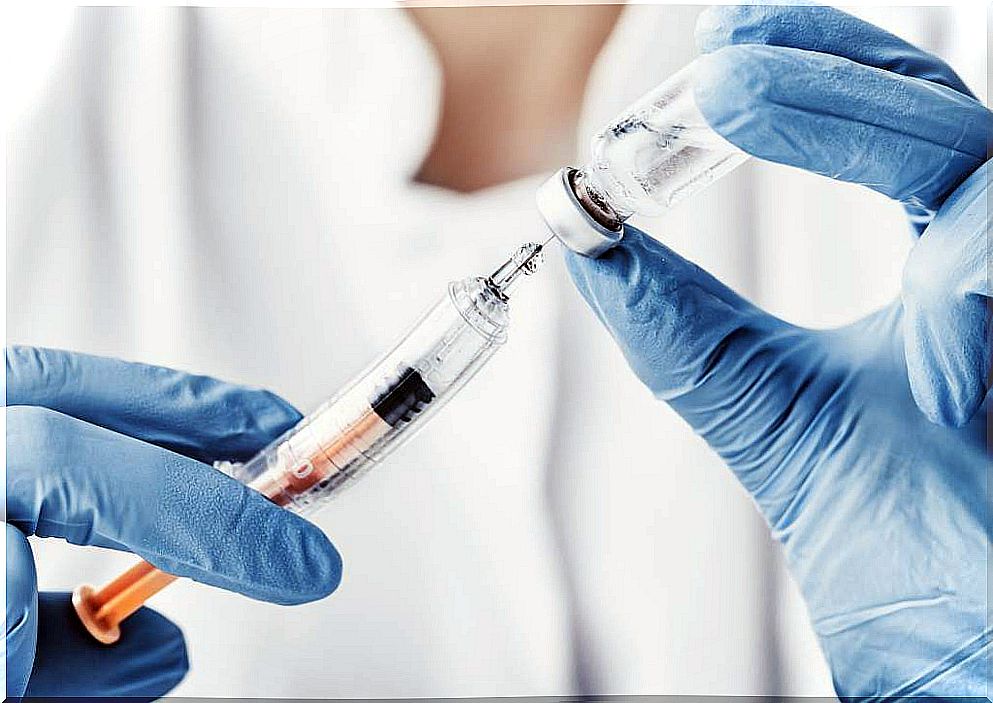The Coronavirus Vaccine Is Approved For Phase 2
The race to obtain a vaccine against the coronavirus began in the same month of January 2020, when SARS-CoV-2 left its China of origin to spread to other countries. Given the existence of the pandemic, some companies and institutes began the search.
One of the initial breakthroughs came from the United States, where the National Institute of Allergy and Infectious Diseases (NIAID) and the Moderna company joined forces . Through a ribonucleic acid (RNA) replication technique, they made a vaccine with only genetic information.
This means that, as we will see later, the physical presence of viral particles was not necessary, but rather it was possible to emulate the SARS-CoV-2 genome in the laboratory. Hence the speed with which the doses were prepared.
Now, the United States government has authorized going to phase 2 of experimentation in the coronavirus vaccine. This involves a larger human trial.
The history of the coronavirus vaccine
The biotechnology company Moderna had prepared the first doses of vaccines at the beginning of 2020. Already on February 7 of this year it had manufactured the first vials to inject.
This is a very rapid technological advance, if we consider that the onset of COVID-19 infections was between November and December 2019, in China. It has been genetic engineering that has accelerated the process.
This coronavirus vaccine is based on a biotechnological methodology called mRNA. In basic terms, it is a sequencing of the RNA of viruses without the presence of them in the laboratory.
That is, the company recreated the genetic information for SARS-CoV-2 with data it obtained from Chinese scientists who first isolated the genome. It is an almost entirely theoretical process.
On March 4, the Food and Drug Administration (FDA) approved the start of phase 1 of the experimentation. The company placed the first vials in humans on March 16, 2020, thus initiating the first phase of the coronavirus vaccine.
From phase 1 to phase 2
Phase 1 testing of the coronavirus vaccine was established as an open-label trial. In this type of experiment, both the investigated subjects and the researchers are aware of all the information.
The injected groups were divided into three, which received doses of 25, 100 and 250 micrograms, respectively. The minimum waiting time was 6 weeks to have the preliminary results. That interval was fulfilled at the end of April.
The vaccine was tested in healthy adults between the ages of 18 and 55. As with phase 1 experiments, the aim is to establish the safety of the product, that is, that it does not generate unwanted adverse effects or life-threatening events.
By April 27, the Moderna company had submitted the papers to the FDA to request authorization for phase 2 of the coronavirus vaccine. A few days ago, on May 7, 2020, this phase was authorized.
What are phase 2 tests?
The substantial difference between phase 1 and phase 2 of an experiment is the objective pursued. While the first focuses on the safety of the material to be analyzed, the second seeks to establish efficacy.
During phase 1 the question of adverse effects is asked. Not many subjects usually participate, since it is only a matter of establishing that there is no collateral damage caused by the product that is being investigated.
Instead, the question in phase 2 is whether or not the substance works. Larger participations of subjects are usually made than in the previous stage and last a little longer, in order to collect data that support the effectiveness.

Next Steps in the Coronavirus Vaccine
Once the safety and efficacy of the coronavirus vaccine is established, the next step is phase 3. The Moderna company estimates that it will be ready for this development in the early summer, for the months of July or August.
Phase 3 of experimentation almost always consists of comparing the product with other available options, to establish if it is worth launching. In this case, the determining factor will be whether the vaccine is capable of generating a positive and protective effect in the world, or it would not contribute anything.
The truth is that we should not be anxious about this investigation. The development of a reliable drug product is slow and does not always come to fruition.
Although times have accelerated due to the contingency of COVID-19, the weeks it takes to test the vaccine remain the same. It is an illusion to pretend that in a few weeks we will have doses throughout the planet to vaccinate.
We will have to wait and carefully follow the preliminary reports that are released. Then the distribution and application stage will come, which will vary according to geographical areas. The studies continue, you have to be patient.









